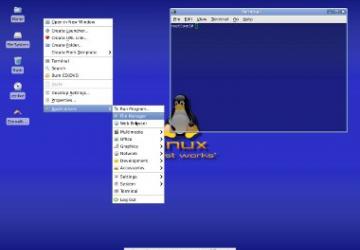Spotlight on Linux: Zenwalk Linux 6.4 "Live"

Zenwalk Linux is a Slackware based distribution introduced in early 2004 that aims to be fast, easy, modern. Zenwalk tends to have a very loyal user-base in addition to leaving most distro hoppers and reviewers impressed. Most agree with Zenwalk's latest tagline: It just works.
It is quite an ambitious project as it offers and maintains five different editions. The Standard Edition is the flagship version for the project. It's a complete system for desktops, laptops, and servers. The Core Edition is a basic version of Linux with no X server, no graphical environment, and no applications. It's for those who like to build their own system their own way. The Live Edition is the installable Live CD that will boot any of 12 common languages. And finally, there are the alternative graphical environment editions: the GNOME Edition and the Openbox Edition.
The default desktop environment of Zenwalk is Xfce. Xfce is a likable alternative to GNOME and KDE because of its customization options, lighter weight, higher performance, and its familiar elements. Zenwalk also ships with a handy software stack covering all the more common computer tasks. It includes the Totem movie player, Brasero media burner, OpenOffice.org, The GIMP, Icecat / Icedove, Pidgin, and Geany. There are lots of handy system tools too, some of which are original to Zenwalk. All this sits on Linux 2.6.33.4, Xorg X Server 1.7.7, and GCC 4.4.4.
Zenwalk has its own package management system called Netpkg. It can be used at the command line or through its easy GUI. The Zenwalk repositories contain many other popular and useful applications as well as security and application updates.
The installer isn't as complete as some others, but once the target drive is prepared with a partition for Zenwalk and a swap partition there is very little work left. Define the target partition, set up a user, and select a root password, Zenwalk does the rest. Zenwalk still uses Lilo which many don't like, but that step can be skipped.
Advantages of using Zenwalk are good performance, small but welcoming community, and an up-to-date system. It's easy to use, yet it's not run of the mill. It's different without being disconcerting. Hardware support is excellent for Linux supported devices and the desktop is attractive yet unobtrusive.

Disadvantages might be a few niggles here and there. For example, one report states that updating the system can be resource intensive. Another complained that there were no advanced options during installation for LVM, RAID, and disk encryption. But most reports had nothing but good things to say.










